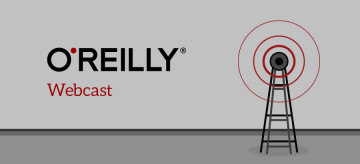- Advertising
- Bare Metal
- Bare Metal Cloud
- Benchmarks
- Big Data Benchmarks
- Big Data Experts Interviews
- Big Data Technologies
- Big Data Use Cases
- Big Data Week
- Cloud
- Data Lake as a Service
- Databases
- Dedicated Servers
- Disaster Recovery
- Features
- Fun
- GoTech World
- Hadoop
- Healthcare
- Industry Standards
- Insurance
- Linux
- News
- NoSQL
- Online Retail
- People of Bigstep
- Performance for Big Data Apps
- Press
- Press Corner
- Security
- Tech Trends
- Tutorial
- What is Big Data
SQL Versus NoSQL: What are the Differences and How Do You Choose?
For several decades, SQL (Structured Query Language) has been the most used programming language for managing databases. SQL is a relational database management system (RDBMS).
Recently, NoSQL has arisen as an option to SQL, and for many this is exciting because it frees the database manager from the restrictive tables and columns associated with SQL, which are not well-suited to managing unstructured data sets associated with big data. What, exactly, are the differences between the two, and when is NoSQL a preferable model to SQL?

For several decades, SQL (Structured Query Language) has been the most used programming language for managing databases. SQL is a relational database management system (RDBMS). Recently, NoSQL has arisen as an option to SQL, and for many this is exciting because it frees the database manager from the restrictive tables and columns associated with SQL, which are not well-suited to managing unstructured data sets associated with big data. What, exactly, are the differences between the two, and when is NoSQL a preferable model to SQL?
The Conceptual Differences Between SQL and NoSQL

An SQL server uses the framework of a relational database, set up with defined categories, organized into columns. SQL tables are ideal for storing data that is structured, grouping the categories into Schemata. Structured data like names, addresses, contact numbers, etc. fits nicely into an SQL format.
However, today’s data isn’t always neatly structured, and another format is needed that is not dependent on the relationships of the data. This is where NoSQL comes in. It is sometimes called “Not Only SQL”. It allows for the storage of unstructured data across multiple processing nodes without categorizing the data into fixed tables and schemata. Usually, a NoSQL database scales horizontally. As opposed to the RDBMS, a NoSQL database is called a non-relational database or distributed database.
The Factual Differences Between SQL and NoSQL

For the programmer and database administrator used to SQL, this concept can be difficult to grasp at first. Here is a list of ways in which using SQL and NoSQL is different.
• SQL databases are structured into tables, while NoSQL databases are based on documents, graphs, wide-column stores, or key-value pairs. In NoSQL, there is no standard definition of schemata that must be worked within when structuring the data.
• In SQL, databases are structured on predefined schema based on structured data, while in NoSQL; schema is dynamic in order to manage unstructured data.
• SQL databases scale vertically, while NoSQL databases scale horizontally.
• SQL databases are built and managed using SQL language, while NoSQL databases use UnQL, or Unstructured Query Language. The syntax of UnQL varies between databases.
• SQL is preferable for complex queries, because NoSQL lacks the standard interfaces necessary to carry out complex queries. NoSQL queries are less powerful than SQL.
• NoSQL handles hierarchical data better than SQL. Hence, NoSQL is preferable to SQL when managing big data.
• Since SQL databases scale vertically, while NoSQL databases scale horizontally, SQL databases can be scaled by adding memory, speed, and processing power to a single server. NoSQL, however, scales horizontally, meaning it is necessary to add new servers as the amount of data and traffic increases.
• When managing transactional applications, SQL is better because it is generally more stable and offers stronger data integrity. NoSQL will work with transactional applications, but isn’t as stable in high-load situations and with more complex transactions.
• Since SQL is older and more established, there is generally more support available. However, as NoSQL gains ground with big data applications, community and vendor support is improving significantly.
• Examples of SQL databases include: MySQL, Oracle, Sqlite, Postgres and MS-SQL.
• Examples of NoSQL databases include: MongoDB, BigTable, Redis, RavenDb, Cassandra, Hbase, Neo4j and CouchDb.
The Full Metal Cloud by Bigstep is the ideal way to get the most out of your big data and NoSQL database. Visit the website for valuable resources on getting started and a free trial of the Bare Metal Cloud.
Readers also enjoyed:

Bigstep presents O'Reilly webcast on getting the most from a NoSQL DB


Leave a Reply
Your email address will not be published.